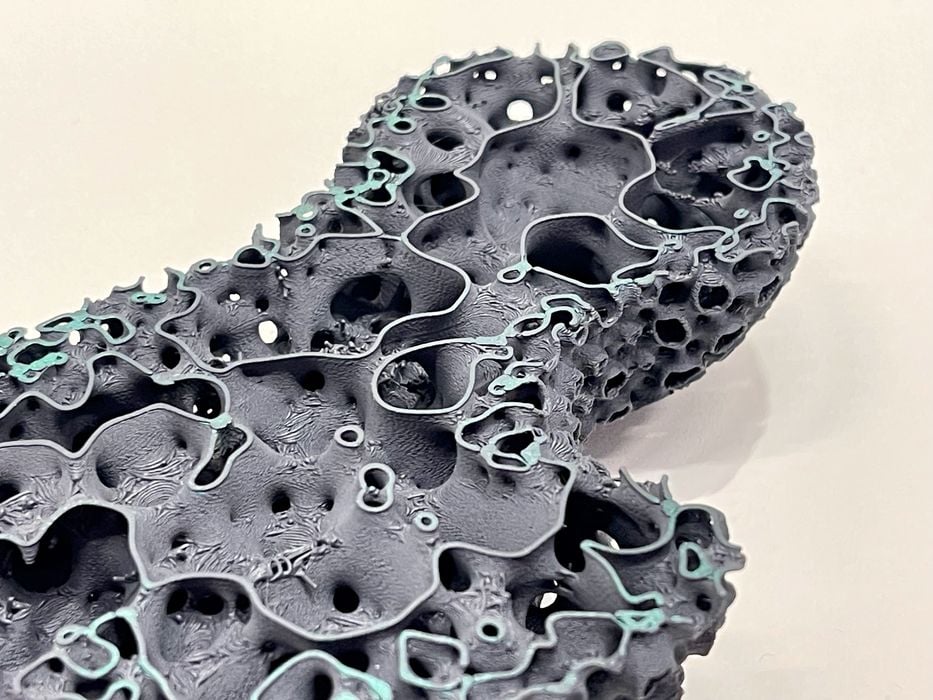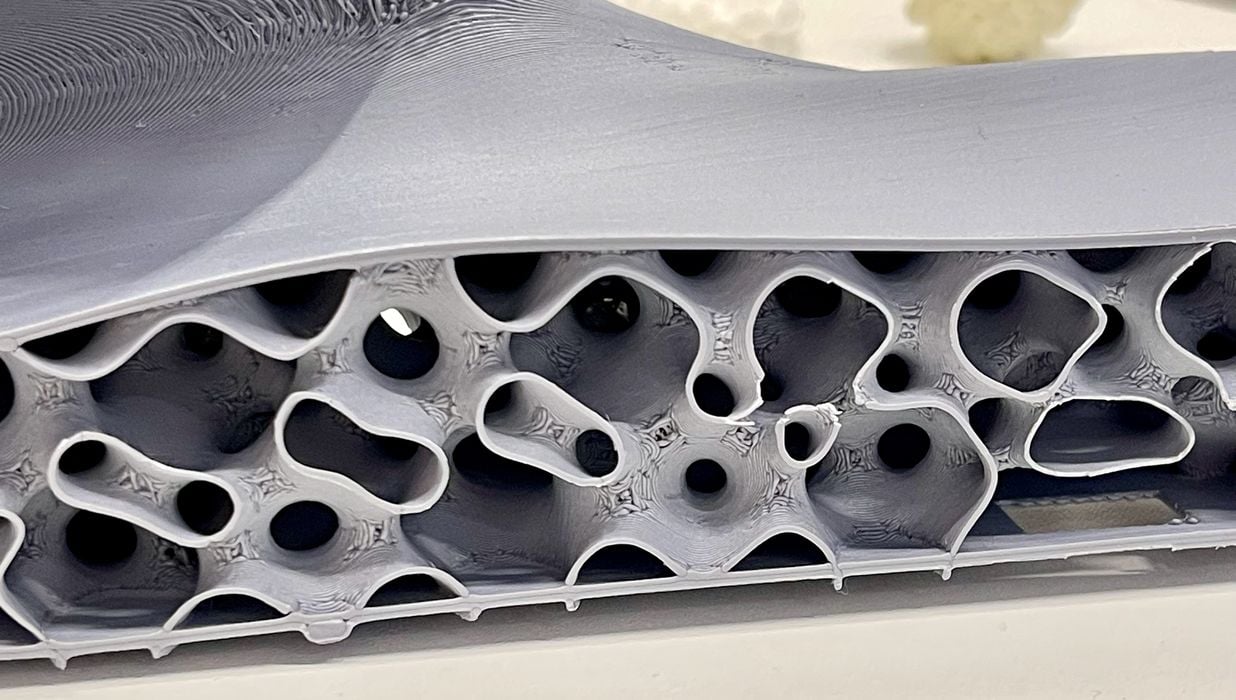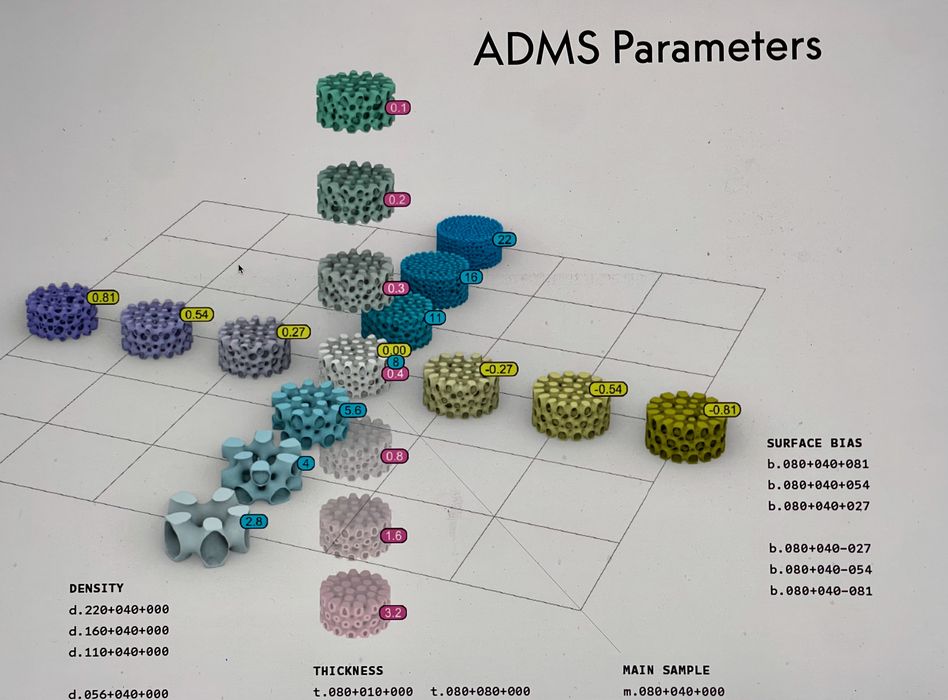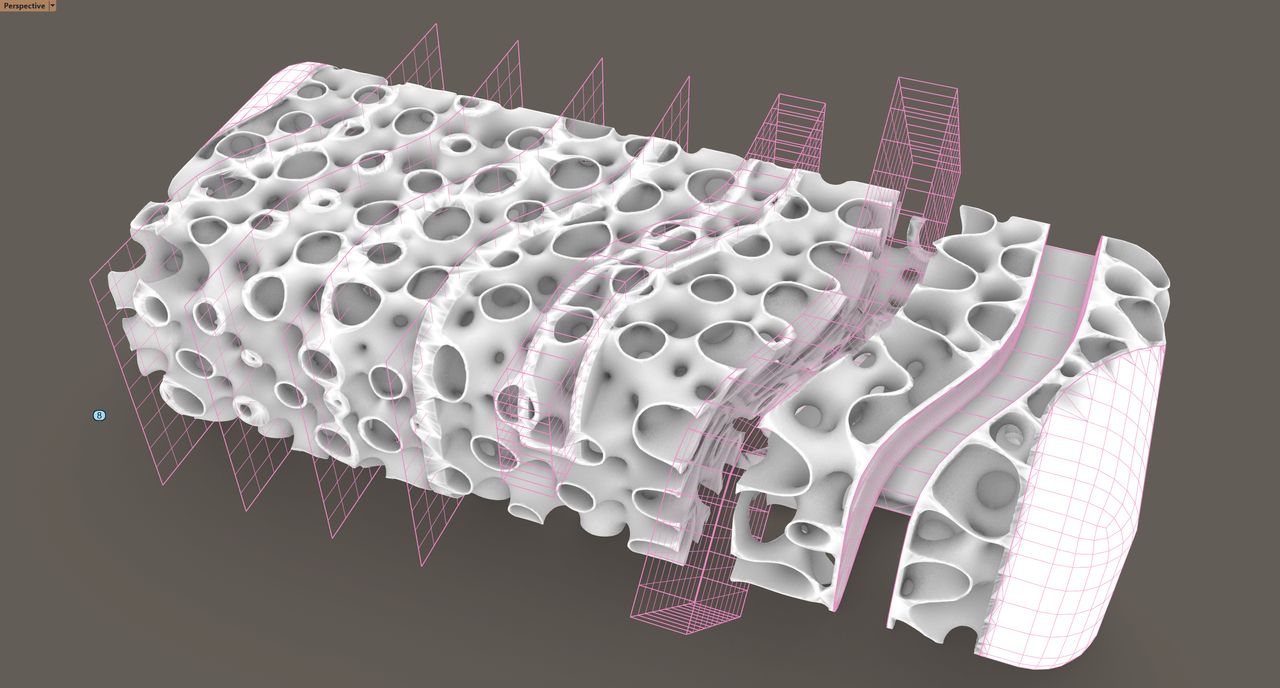
Spherene offers advanced software that can quickly generate highly complex 3D models.
We discussed how this works with the Swiss company at Formnext, and learned quite a bit about their operations.
They began developing the system way back in 2018, when they were experimenting with ways to join 2D surfaces together to form 3D geometries. The concept they invented, which they call “spherenes”, was eventually transformed into their Adaptive Density Minimal Surfaces (ADMS) technology. This can be used to generate incredibly complex structures that can only be produced using 3D printing.
They explained that the concept works with all shapes, as it is conformal. That is, the complex bubble like lattice generated is not just “cut off” when it reaches the edge of the object. In the above image, notice how the internal structure seems to flow with the object perimeter.

Instead, the internal structure “conforms” to the exterior shape as you can see above. This makes it possible to use this technology on basically any 3D model.

It’s not quite automatic, however, as there are three “knobs” the operator can tweak to play with the density of the resulting geometry. Above you can see a chart showing how this works.
They explained that the system, which creates “inverted sphere isotropic geometry”, is controlled like f-stops on a camera. It produces highly regular geometry.
It’s possible to vary the density throughout the structure, yet at the same time ensure that a minimal surface is created. In other words, the resulting part 3D models are the lightest possible.
It’s also possible to predict the yield and break point for a given part generated by the system. They said that this provides “some truth” to the design, and that’s usually lacking from other lattice-generating systems.
Currently the system is offered as a plug-in for the popular Rhino3D system, and it’s unsurprisingly called “sphereneRHINO”.

As you can see in this screenshot from Rhino3D, it is entirely possible to easily create all manner of highly complex shapes for a given part.
sphereneRHINO is currently in beta, and is available to the public free of charge! However, you will need a Rhino3D installation in order to use the plugin.
In our discussion it seems the company hasn’t yet settled on a method of charging for the product.
The company also provides a Discord server where usage discussions take place.
Will Spherene show up in other software environments? That is likely because 3D modelers rarely want to switch tools due to the expense and time required to learn one. Representatives told us they are “talking to everyone”, so expect it to appear in other tools soon.
Via Spherene
